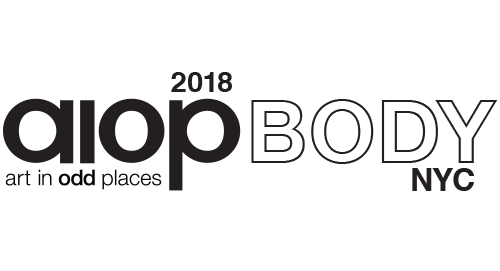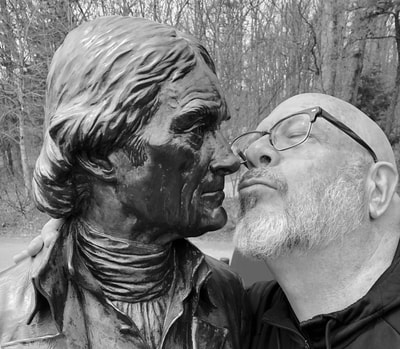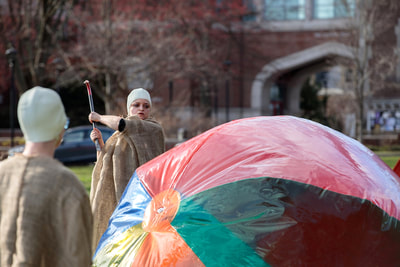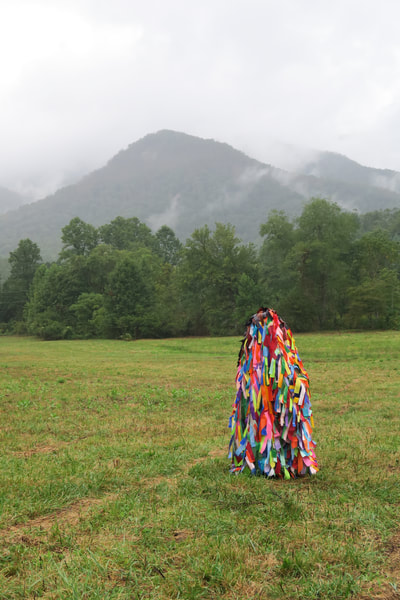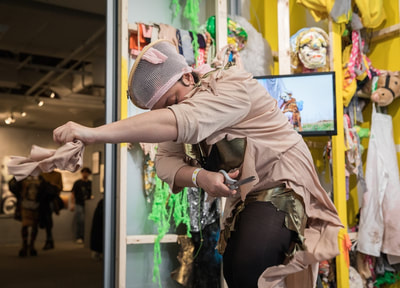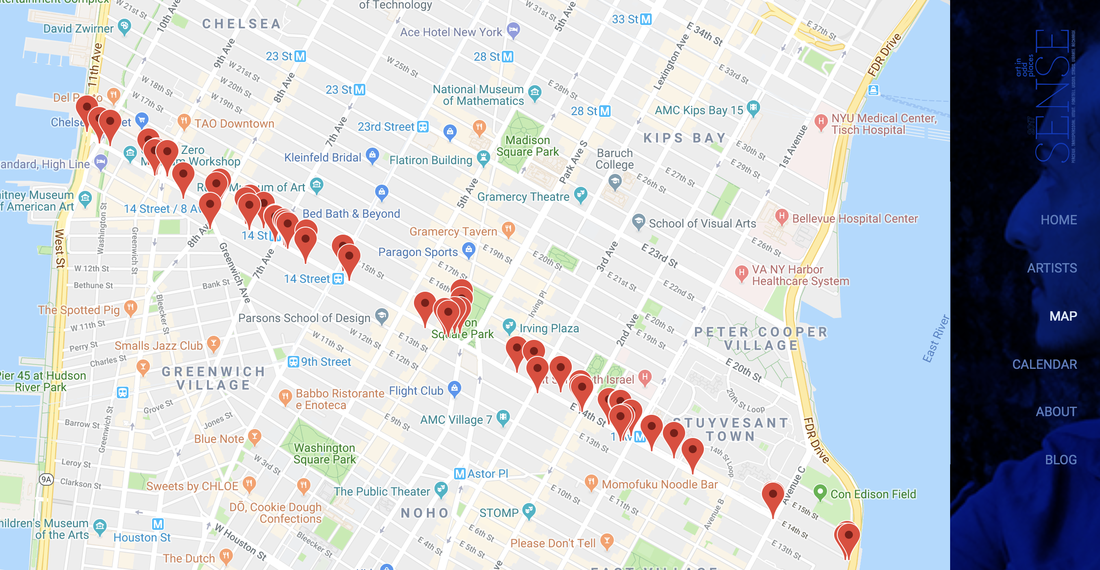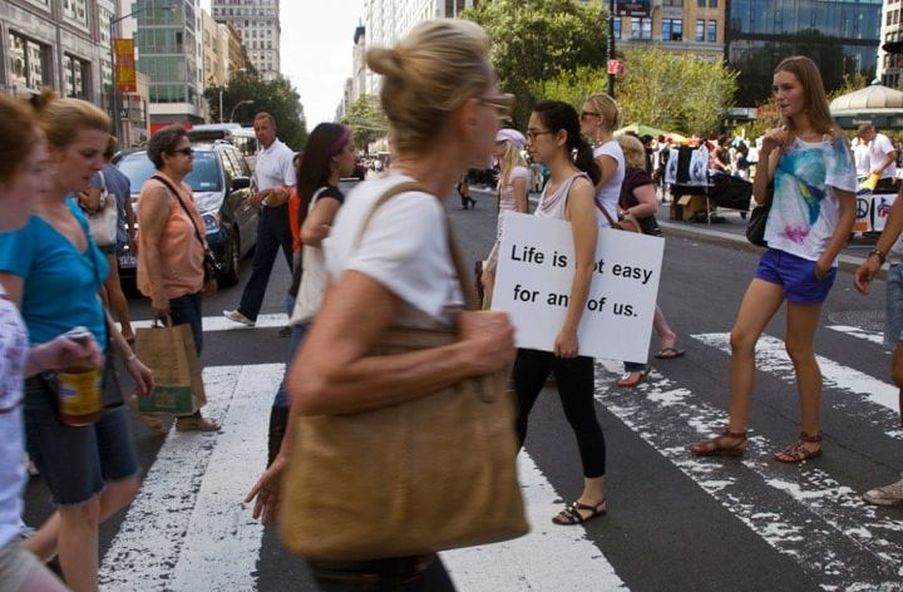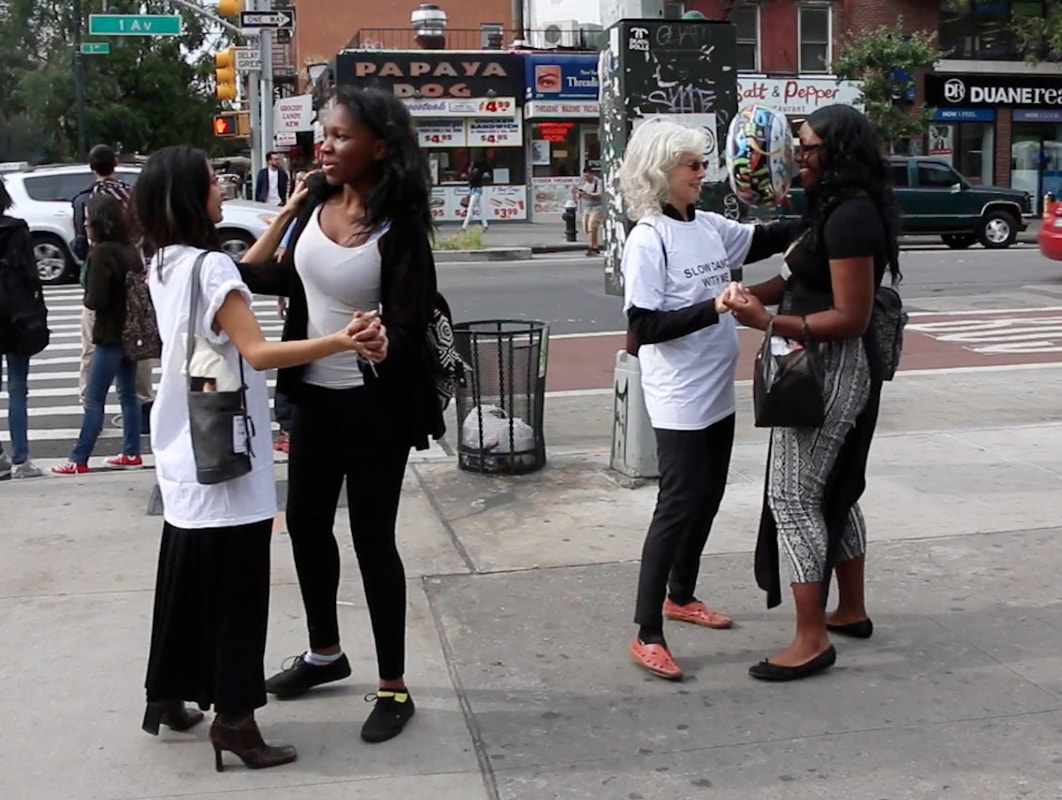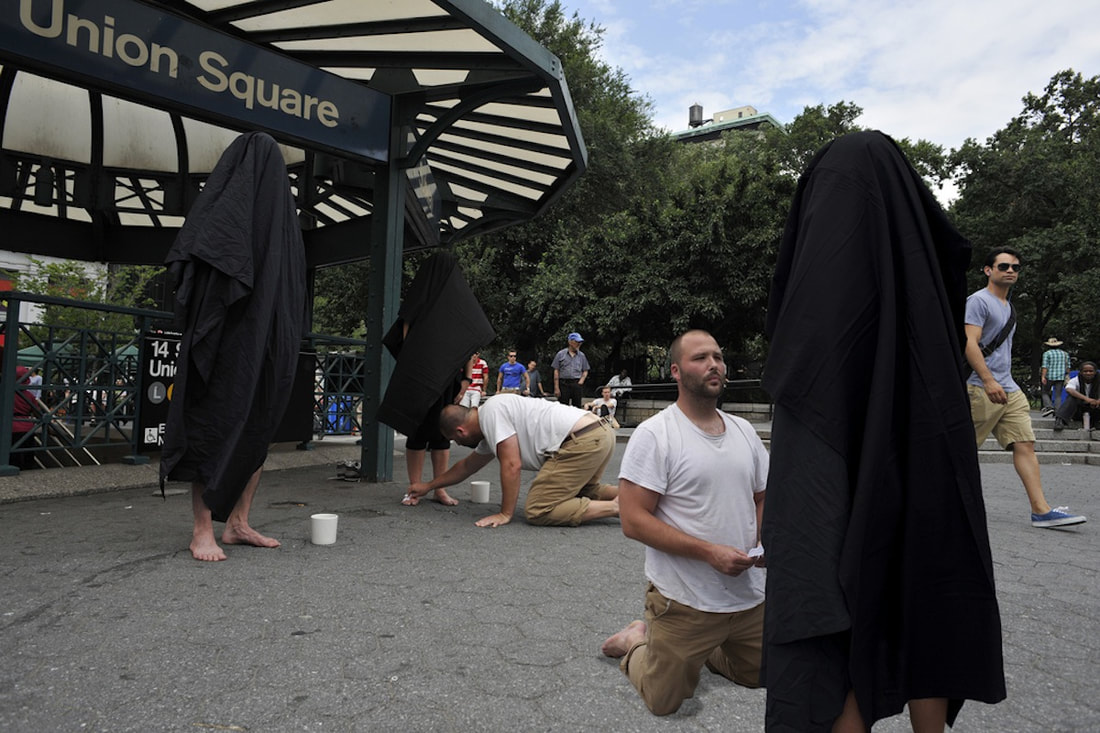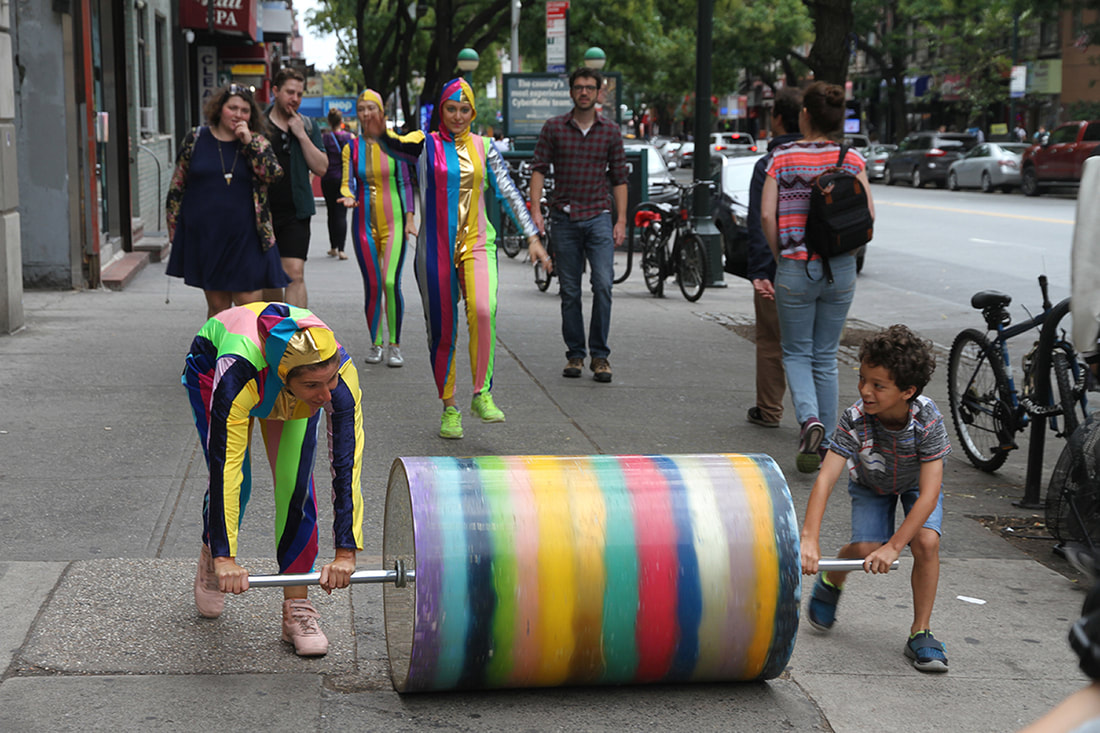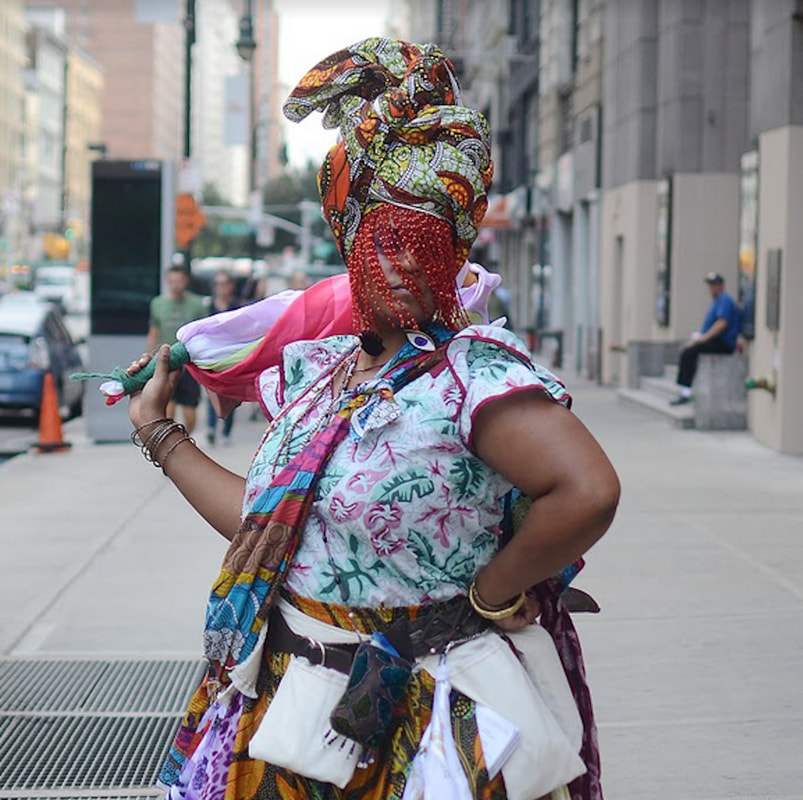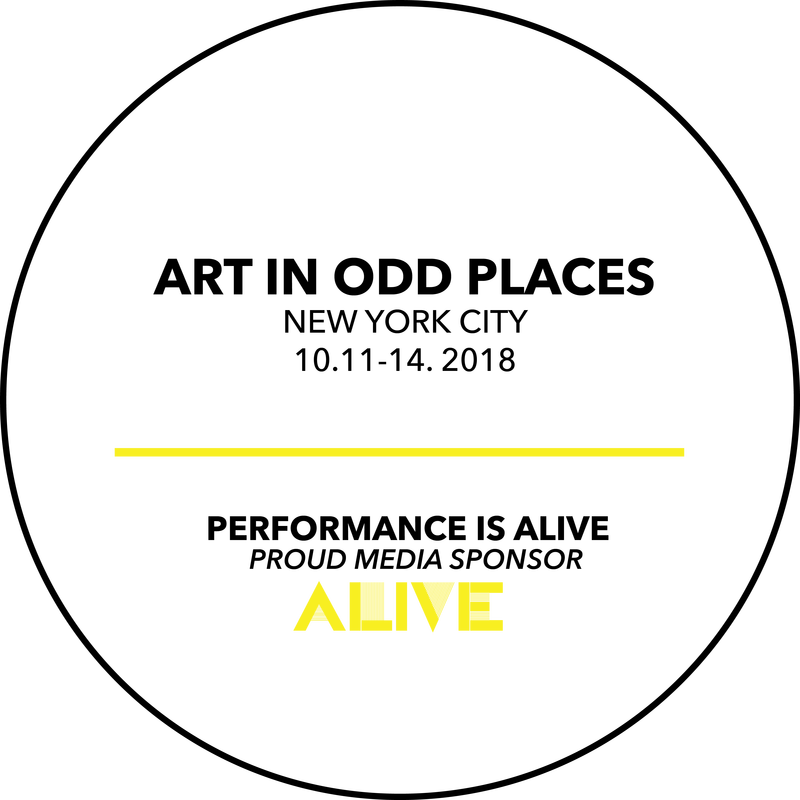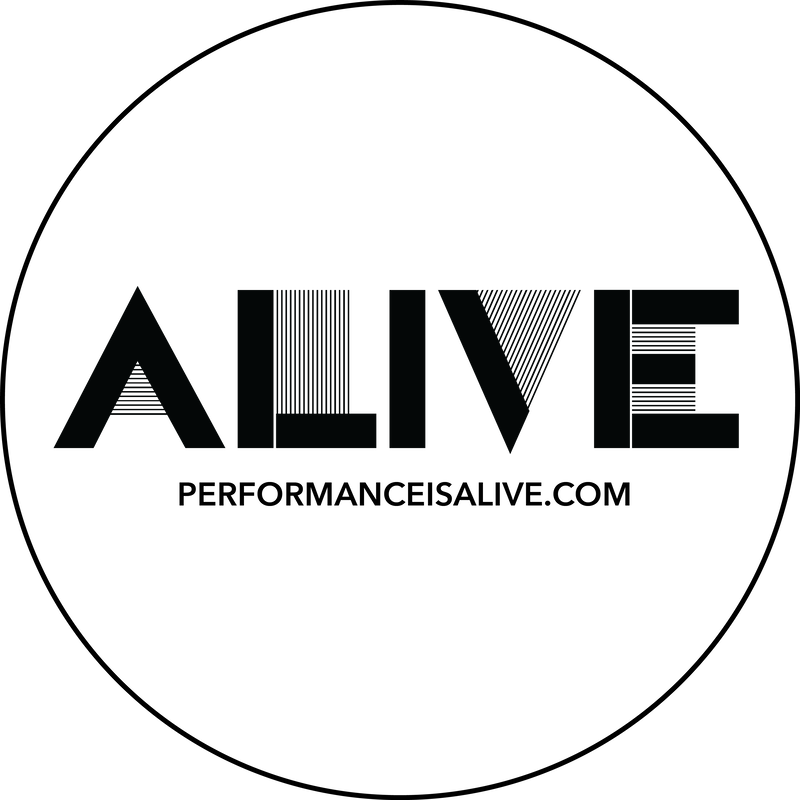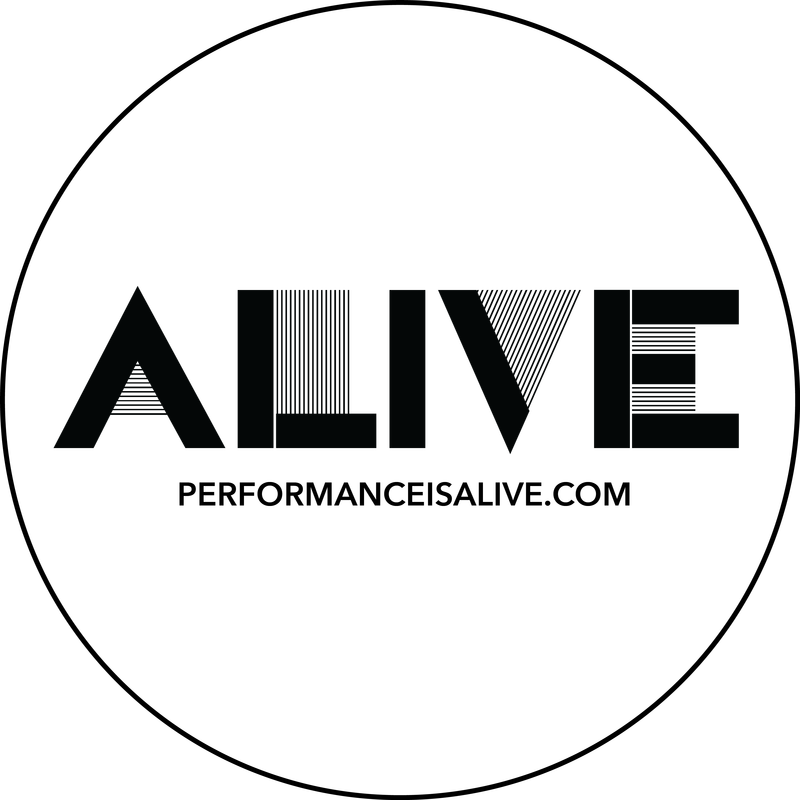|
Each fall, the streets of New York City (more specifically 14th Street) are injected with a higher and more concentrated dose of public installation and performance art via Ed Woodham's grass-root initiative, Art In Odd Places. Curated by performance artist and curator, Katya Grokhovsky, this year's festival and corresponding exhibition exclusively features female identifying artists. After reviewing the largest number of applications ever received in the organization's 14-year history, Ed and Katya spoke with us about AiOP's exciting history, the necessity for reclaiming public space and the decision to focus on the (female) BODY. It is a great honor to share our discussion with you here and stay tuned for the incredible list of participating artists for AIOP 2018 BODY. - Quinn QUINN DUKES: Art in Odd Places was one of the first live performance events that I experienced in New York City. Can you talk about the first edition of AiOP NYC? ED WOODHAM: The first edition of the NYC iteration was my personal artistic response to the disappearance of civil liberties, the hyper-surveillance and privatization of public spaces after the events of 9/11. It was a reimagining of the original version that had been created in Atlanta for the Cultural Olympiad in 1996 – to bring attention to the importance of free speech in public space through multidisciplinary art mediums. So. The first 2005 AiOP was a ragtag patch-work festival relying heavily on a close group of my dear friends without whom I couldn’t have made it happen. But if you look back, the archive of AiOP is a testament of what can be achieved working independently of institutions and permissions, and with the dedication of many collaborators. QD: So do you feel that the festival still has the same collaborative energy as 2005? EW: Absolutely. More so than ever – as the festival has grown larger the effort to create it requires a huge collaborative engagement from the AiOP team: curator, curatorial manager and assistants, designers, administrators, interns, artists, and volunteers. QD: What led you to 14th street? EW: 14th Street is the longest stretch across Manhattan (east to west) East River to the Hudson River 2.0 mi (3.2 km) and it marks the southern border of Manhattan’s grid system. 14th Street has a rich storied history of social justice activism (Union Square to The Living Theater), night life (from The Palladium to The Hell Fire Club), artists’ residences (Ginsberg to Duchamp), food (Luchow’s to Disco Doughnut), commerce (the original Macy’s to The Meatpacking Fashion District), gentrification (again the Meatpacking/Highline to Stuyvesant Town). It’s a perfect NYC street laboratory to explore communication, trend shifts, urban construction, diverse socioeconomic neighborhoods, and the pedestrian organism – in public space. QD: Has the project evolved over time? EW: Art in Odd Places has evolved as the times and 14th Street public spaces have progressed. When AiOP began in 2005, urban dwellers/pedestrians were more cognizant of personal and public space. With the introduction and advancement of the mobile phone/personal computer, there has been a shift in the navigation through civic space. Gentrification and displacement of residents and businesses has changed the landscape of the environment for possible engagements. For example the sale of Stuyvesant Town and Peter Cooper Village in 2015 foreshadowed the leveling of many long time far east side establishments to make way for high rise upper income residencies – drastically reshaping the neighborhood’s inhabitants. 14 Street is ever evolving. Also, in 2012, AiOP began to travel to cities around the world and U.S to model the concept for civic and educational producers. QD: AiOP is not exclusive to performance art, what led you to the decision to present such a complex array of mediums? EW: A major impetus of AiOP is to present a collection of creative works in a variety of mediums outside of the privilege, elitism, and constrictions of the institutions of museums, galleries, theaters, and brick and mortar spaces. QD: Each festival seems to have a thematic container, how do you select these themes? EW: In the beginning I created the one word focus that has ambiguous meanings like SIGN for AiOP 2009. Now the curator or curatorial team select the focus or theme. QD: Does this shift in theme impact the selected work and the experience of the works presented? EW: Hopefully – as it’s the idea – that the theme is topical and timely. QD: When did you meet Katya? EW: I met Katya as a participating artist in Art in Odd Places 2014: FREE curated by Juliana Driever and Dylan Gautier. QD: Do you recall your impressions of performance that she conducted? EW: Oh yes! The project, Slow Dance, immediately sparked my attention as I wondered if passersby would actually take the time to participate. It seemed an awkward (and brave) exchange for strangers to dance with strangers – threatening their personal space in a public setting. It was an experiment in comfort zone and interesting to observe the responses to invitations to the intimacy of a slow dance. QD: Why is AiOP BODY an essential project to present in 2018? EW: It’s vital at this point in time for Art in Odd Places to provide Katya – a veteran AiOP artist who moves fluidly between visual and performance art (and her curatorial and administrative team) with the AiOP systems to present artists’ (who identify as female) projects that question patterns about gender, sexuality, politics, status, agency and the other interpretations of body. QD: When did you first experience AiOP? KATYA GROKHOVSKY: I think it was possibly around 2011, soon after I moved to NYC post grad school from Chicago. I initially volunteered as a performer for artist Rob Andrews, in his project Union Square Cleaning, as part of the festival’s edition RITUAL. Afterwards in 2014, I participated in the festival with one of my own projects, Slow Dance in NYC in AiOP FREE, then again the following year in Orlando’s TONE edition with Status Update, and recently with a collaborative project in 2016 RACE in NYC. So, I know it intimately as an artist first, as well as an audience member. I’ve always liked the core of Art in Odd Places, how it aims to broaden the dialogue around interdisciplinary practices, positioning artworks outside of mainstream spaces, in public domain, outside of institutional regulations and any interior constraints. Specifically, such as scarcity of physical spaces for artists to exhibit experimental and alternative work in New York. QD: What brought you to the festival and exhibition parameters concept for AiOP Body? KG: As an artist - curator, I’m always searching for expansion of the definition of contemporary art practice, and Art in Odd Places, founded and directed by a practicing artist, appeals to my concerns and interdisciplinary way of working. I often utilize the body in my own work and am interested in exploring what this subject matter means to other practicing artists. What does the body, as a battlefield, situated in public realm signify. Specifically a non-male identifying body, in the city like New York, in USA at this time? What is the body’s relationship to site, agency, status, visibility, erasure, absence, exclusion, etc. The theme felt innately natural and relevant to me to explore as a curator at this moment. QD: You mention, non-male identifying body, this is the first year that the festival has presented works from an all female identifying selection of artists. What led you to this decision? KG: My decision to present works by female identifying and non-binary artists this year stems from my interest in seeing so called “other” bodies stage a take over of public space, exposing and questioning certain truths and absurdities of non-male existence in our current climate. QD: Have you experienced any resistance to this? KG: We have experienced some negative feedback so far, and I’m sure we can expect more as we move forward, but I do believe this is a necessary and timely subject matter and way of dealing with it. As a curator, I am simply attempting to correct the balance through support, exposure and visibility of these voices, which is still pretty uneven in the arts. QD: What are your overall thoughts on the open call submissions this year? EW: It was one of the largest response to an Art in Odd Places open call in 14 years. The application pool was extremely strong and very exciting. KG: I am very excited by the overwhelming response we received. Especially, by the great number of critically engaged, exciting submissions from local, national and international artists. It’s definitely quite an involved and challenging process putting the festival together, and I’m enjoying evolving my vision as we move along through it. QD: Do you think performance art grown over the past 10 years? If so, what do you think has contributed to this growth? EW: Yes, but perhaps even more recently – due to our current unstable political and social climate. Performance art has a history of shifting to the cultural vanguard when there is a collective artistic need to express discontent with the status quo. KG: I definitely think the medium has been much more visible and exposed, entering mainstream spaces, ever since museums have internalized and embraced it through several seminal exhibitions during the last decade, such as Marina Abramovic, Tino Sehgal, Carolee Schneemann, etc, as well as presenting platforms such as PERFORMA, numerous performance festivals globally, etc. Performance art has been with us for quite a long time, and deserves to have a much bigger audience, support and recognition. QD: This year’s festival is accompanied by an exhibition, what led you to this addition? KG: Adding an exhibition component at a brick and mortar space this year might seem to exist in contradiction to the ethos of Art in Odd Places, but I felt I wanted to expand the dialogue into a gallery space as well as give the festival a longer duration and higher visibility. I am looking at the site of Westbeth gallery, also an artist-run and artist-inhabited organization, as an extension of the body of the city, a somewhat art-historically oddly significant place for exhibiting non-commercial and challenging works of art. QD: So all artists that are presenting during the 4-day festival will also present work within Westbeth gallery? KG: Yes, all artists will be activating both sites, simultaneously, in different ways. The gallery will mostly be dedicated to the presentation of post and pre-performance ephemera, objects, video, installations, photographs, text etc, in conjunction with the participatory, interactive live performances, interventions, posters paste-ups, etc which will happen along 14th street. The gallery will act as the festival’s hub for information, public events, such as panel discussions, opening and closing. I am interested in expanding the dialogue around the public, interdisciplinary and performative practices through both the street and the gallery site. QD: How has the curatorial process gone so far? KG: For me, it has been an eye opening and invigorating experience, it feels like I’m inside an eye of the storm somehow, taking the world’s current temperature. There is so much we need to talk about and explore as a society today, the festival feels ever more urgent and needed. I also rarely work with a team, so this experience is definitely teaching me to adapt, listen and step up. In my opinion, all artists should curate at least once, it’s an invaluable process. QD: Have you selected all of your artists? KG: Yes, artist selections have been finalized, soon to be revealed! It’s going to be quite an experience, I hope, both for us and the audiences. QD: What are the challenges of conducting a grass-roots event like this? EW: It’s an ongoing test to remain independent and outside the structures of institutions. Making and sustaining this choice is challenging: financial, maintainable staffing, logistics. Providing a platform for free artistic expression outside of these regularities is a major benefit. KG: There are many challenges we face and have to overcome, financial, time management, space, administrative, etc. As an artist and independent curator though, I am quite familiar with all and any DIY and grassroots methods of organizing events, so these types of problems don’t scare me. I think the benefits, such as freedom of expression and vision, innovative, uninhibited approach to building the festival, finding and working with a dedicated team of people and of course, working with artists I want to work with, do outweigh all of the obstacles in the end. QD: What can we expect for AiOP Body in October? Care to reveal any hints? KG: You can expect an explosive, challenging and timely extravaganza of diverse mediums, materials, genres and themes. From conceptually driven art to visceral performances and mixed media installations, local, national and international artists will come together to explore the BODY in New York. QD: Well, I can’t wait to experience it and cover the events on Performance Is Alive! We are so excited to be the Media Sponsor for this year’s Art in Odd Places!
0 Comments
Your comment will be posted after it is approved.
Leave a Reply. |
CONTRIBUTORSIan Deleón Archives
July 2023
|
|
MISSION // Based in Brooklyn, NYC, PERFORMANCE IS ALIVE is an online platform featuring the work and words of current performance art practitioners. Through interviews, reviews, artists features, sponsorship and curatorial projects, we aim to support the performance community while offering an access point to the performance curious.
Performance Is Alive is a fiscally sponsored project of Fractured Atlas, a 501(c)(3) charity. Contributions made payable to Fractured Atlas for the purposes of Performance Is Alive are tax-deductible to the extent permitted by law. |
